Independent Senior Living Roseville


Independent Senior Living – What It Is and What It Isn’t
The senior living industry is a rapidly growing one and has experienced unprecedented evolution in amenities, hospitality services, and aging in place deliverables over the last 30 years! Just because we’re Minnesotans, doesn’t mean we don’t want to live in “like” senior living communities the snowbirds flock to in AZ and FL every year. We do! So, shake off your dusty old ways of thinking from yesteryear and get educated on independent senior living – what it is and what it isn’t!
Knowing what you want AND what you need is the first step in preparing to evaluate senior living communities. A second sensible step is gaining a strong foundational knowledge of industry terms and definitions related to senior living. RosePointe, an independent senior living community, wants you to get that foundational knowledge here so you can intelligently evaluate your options.
Independent Senior Living
Independent senior living, also referred to as active adult or retirement community living, is categorized as age 55+ or 62+ mature adult living where the desired demographic, culture, lifestyle, cost-economy, and “aging in place” priorities can be explored. Services in independent living (IL) communities are designed to offer numerous resident conveniences while optimizing lifestyle and well-being. Residents live in their own private dwelling spaces and have access to common areas where they can gather with other members of the community. Common areas for socialization and recreation are often found within these communities but amenities and hospitality services vary greatly. So do well-being initiatives as they relate to achieving successful Aging in Place.
Aging in Place is a phrase used to describe a person living in the residence of their choice, for as long as they are able, as they age. This includes having services (or other support) available over time as needs change. Long before COVID was a thing, RosePointe’s Optimizing Aging in Place programming began; including “Driving Your Wellbeing” classes on topics related to life’s “intersections,” such as being mortal, loss of dreams/rebuilding dreams, grief and hope, hospice, and palliative care. Another feature included the introduction of easy-to-use GrandPad technology to improve resident social outreach and engagement. Residents were also offered education on in-home INR lab testing to help them reduce the need for repetitive off-site clinic visits for simple bloodwork. One of the greatest accomplishments was to partner with a home health care agency that could provide affordable resident support when needed. Though a variety of in-home care services are allowed at RosePointe, such as Home Instead and Visiting Angels, the agency we chose to partner with was Comfort Keepers (a national provider of in-home senior care and companion care) to provide four hours of care in the morning and four hours in the evening spread out across participating residents.
Assisted Living
Assisted living (AL), on the other hand, is geared more towards helping aging adults with activities of daily living (ADLs), such as bathing, dressing, toileting, doing laundry, and taking medications. Staff members, including at least one medical professional (typically a certified nurse practitioner), are on call 24 hours a day in most AL residences.
Residents living within independent senior communities can secure ADL support services by contracting with a third-party home health care provider, such as Comfort Keepers aforementioned. These providers require private pay contracts with the resident or their families. If the resident has a Long-Term Care insurance policy, the insurance company would pay for health care expenses, assuming eligibility requirements are met.
Assisted living facilities vary widely in the levels of care available, and state licensing often determines the tiers of medical care that can be provided in these settings. Residents’ care plans are created, overseen, and regularly reviewed by RNs and licensed practical nurses (LPNs). Some level of security, personal care, and nursing staff is available around the clock, but the purpose of assisted living is to provide supervision and support with personal care and ADLs, not 24/7 skilled care. If a resident’s care needs exceed what the Assisted Living Facility can provide, they must either hire a home health agency to come in and provide additional services in their apartment or consider moving to the next level of residential care: a skilled nursing facility or nursing home.
Skilled Nursing
Skilled nursing facility, nursing home, and convalescent home are all terms used to describe a residential facility that provides 24-hour medical care on-site. Skilled nursing care is a high level of medical care that must be provided by licensed health professionals, such as registered nurses (RNs) and physical, speech, and occupational therapists. These services can be necessary over the short term for rehabilitation from an illness or injury or they may be required over the long term for patients who need a high level of care on a frequent or constant basis due to a chronic medical condition.
In Continuing Care Communities (CCC) there is the opportunity to increase the intensity of healthcare from independent living through to skilled nursing within one single residence.
References:
1. AGINGCARE: Key Differences Between Independent Living and Assisted Living, Anne-Marie Botek;
https://www.agingcare.com/articles/difference-between-independent-living-and-assisted-living-168142.htm
2. AGINGCARE: What’s the Difference Between Skilled Nursing Care and a Nursing Home? October 29th, 2019; Marlo Sollitto;
https://www.agingcare.com/articles/difference-skilled-nursing-and-nursing-home-153035.htm
